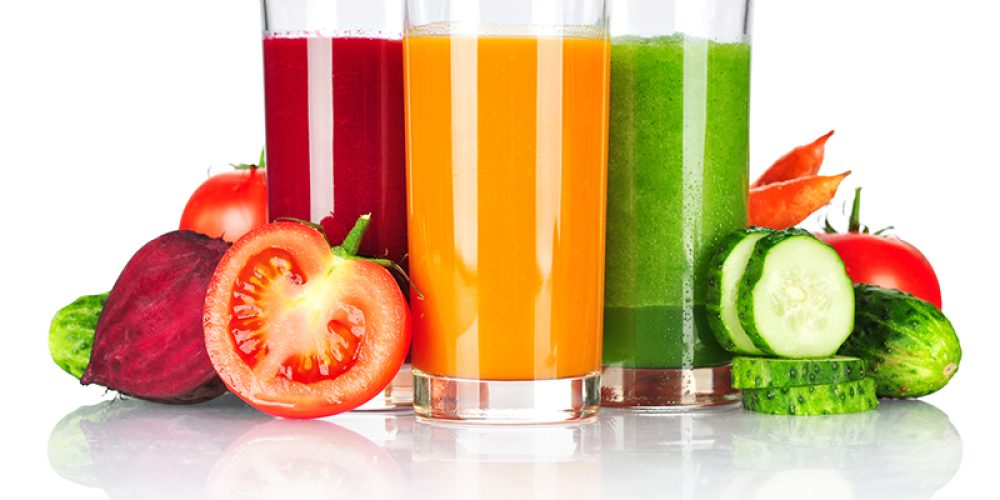Juicing has been a craze over the past ten years. Everyone has now become an expert on juicing and what to juice, and so large amounts of information has been made available in books and online, for the public to view and use. Whether vegetables or fruits, juicing holds great benefits. In their liquid form the vitamins and minerals contained in these foods are absorbed more readily and faster into the blood stream through the digestive system. Most of the vegetables we eat are usually cooked, but we are limited by the fact that, the things we like, we tend to eat.
One good way to ensure that you are getting most if not all the vital vitamins and minerals required other than by supplementation, is by having a daily glass of juiced vegetables and or fruits. Most health conscious persons have been practicing this for years, however, most natural health institutes have discovered the benefit of this for persons who are sick, particularly those diagnosed with cancer. It aids in the restoration of health faster, as liquids absorb faster and is more tolerable when patients are unable to digest regular solid foods.
Juicing is very beneficial. I usually have a glass of juice four days a week, with a combination of vegetables varying slightly day to day. Let’s look at the ones I use and their nutritional values. They are cucumbers, carrots, celery, kale, spinach, apples, ginger.
Cucumber (Cucumis sativus): A green cylindrical shape vegetable which has been used for pickling over the centuries. It should be green, fresh and firm when using. They comprise mainly of water but is also a good source of Vitamins A and C and folic acid. The hard skin is rich in fiber and contains minerals which include silica, potassium, magnesium and molybdenum. Hence it is contributes to the strength of connective tissue in our bodies and can be used topically for swollen eyes, burns and dermatitis.
Carrots (Daucus carota): A thick, fleshy, deeply orange colored root that grows underground. It belongs to the Umbelliferae family along with turnips, celery, parsnips, parsley etc. It provides the highest source of Vitamin A carotenes (two carrots provide four times the RDA of Vitamin A). It is also an excellent source of Vitamin K, biotin, and fiber. It contains good levels of Vitamin C, B6, potassium and thiamine. They are an excellent source of antioxidants which protect against cardiovascular disease and cancer. Carrots promote good vision, especially night vision and protects against macular degeneration and the development of senile cataracts, which lead to blindness in the elderly.
Celery: Also belonging to the Umbelliferae family. It is usually in shades of green, leaf top ribs arranged in a conical shape and joined at the base. It is an excellent source of Vitamin C and fiber. It contains potassium, calcium, folic acid, Vitamin B1, B2 and B6. Celery contains phytochemical compounds known as coumarins, which are useful in cancer prevention and enhancing white blood cells. It tones the vascular system, lower blood pressure and may be useful in cases of migraines.
Kale (collards): A green leafy, curly edged vegetable a member of the cruciferous family. There are several varieties available now with reference to color and leaf edges. Kale is among the most highly nutritious vegetable. It is an excellent source of carotenes, Vitamin C, B1, B2, B6 and E. It contains manganese, copper, iron and calcium. It is a high source of dietary fiber, chlorophyll, lutein and zeaxanthin. It exhibits the anti-cancer properties and its high calcium to phosphorous ratio, prevents osteoporosis. It contains goitrogens which can affect individuals with Thyroid problems so moderate use is important. Also due to the presence of oxalate, persons with kidney stones should avoid overconsuming.
Spinach (Spinacia oleracea): This belongs to the same family as beet and chard. It has the bitterness of beet greens and the slightly salty flavor of chard. It is an excellent source of Vitamin K, B1, B2, B6, E, carotenes, Vitamin C, and folic acid. It is also a very good source of manganese, magnesium and iron. It has remarkable abilities to restore energy, increase vitality and improve the quality of the blood. It is an alkaline-producing food useful in helping to regulate body ph. It is also of the richest dietary source of lutein, promoting healthy eye-sight and preventing macular degeneration and cataracts. It is a strong protector against cancer.
Apples (Malus pumila): A member of the rose family along with the pear. It is a crisp, white-fleshed fruit with a red, yellow or green skin. Apples are an excellent of Vitamin C, pectin, other fibers and rich in potassium. Most of the nutrients are contained in the skin and higher in many nutrients and phytochemicals. “An apple a day keeps the doctor away” appears to be true. It is associated with a reduced risk of heart disease, cancer, asthma and type 2 diabetes compared to other fruits and vegetables.
Ginger (Zingiber officinale): An erect perennial herb that has thick tuberous rhizomes. It is available in various formsm for example, whole fresh roots, dried roots, powdered ginger, crystallized and even pickled. It is very effective in alleviating symptoms of gastrointestinal distress. It is regarded as an excellent carminative, a substance that promotes the elimination of intestinal gas and intestinal spasmolytic, a substance that relaxes and soothes the intestinal tract. It is safe in treating nausea and vomiting associated with pregnancy. It also contains very potent anti-inflammatory compounds called gingerols. Hence people with osteoarthritis or rheumatoid arthritis experience a reduction in pain levels and improvements in their pain levels and mobility.
So now you have it!.
You can research and discover different vegetables and fruits you can use for juicing, and start adding juices to enrich your diet and becoming a healthier and happier you.
Author: Charlene Chablal-de Gourville BSN, RN, AScn Environmental Health.
Adv Dip Holistic Nutrition (2015 candidate)
Produced by: Neoteric Natural Health Consultants 2015

